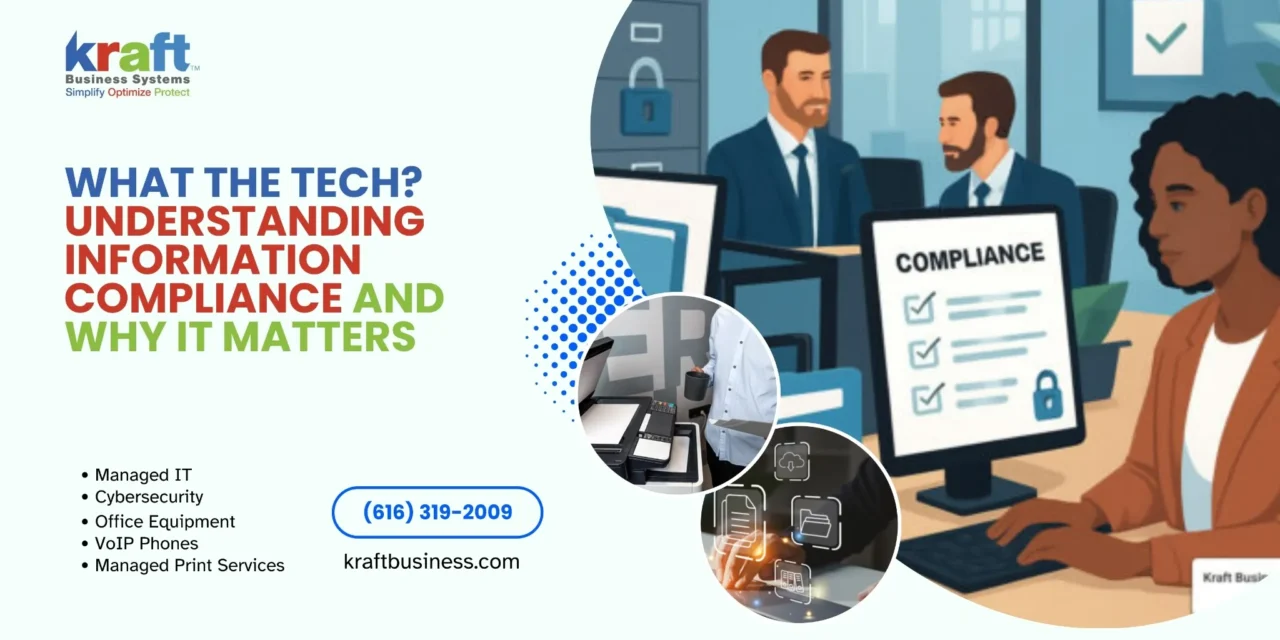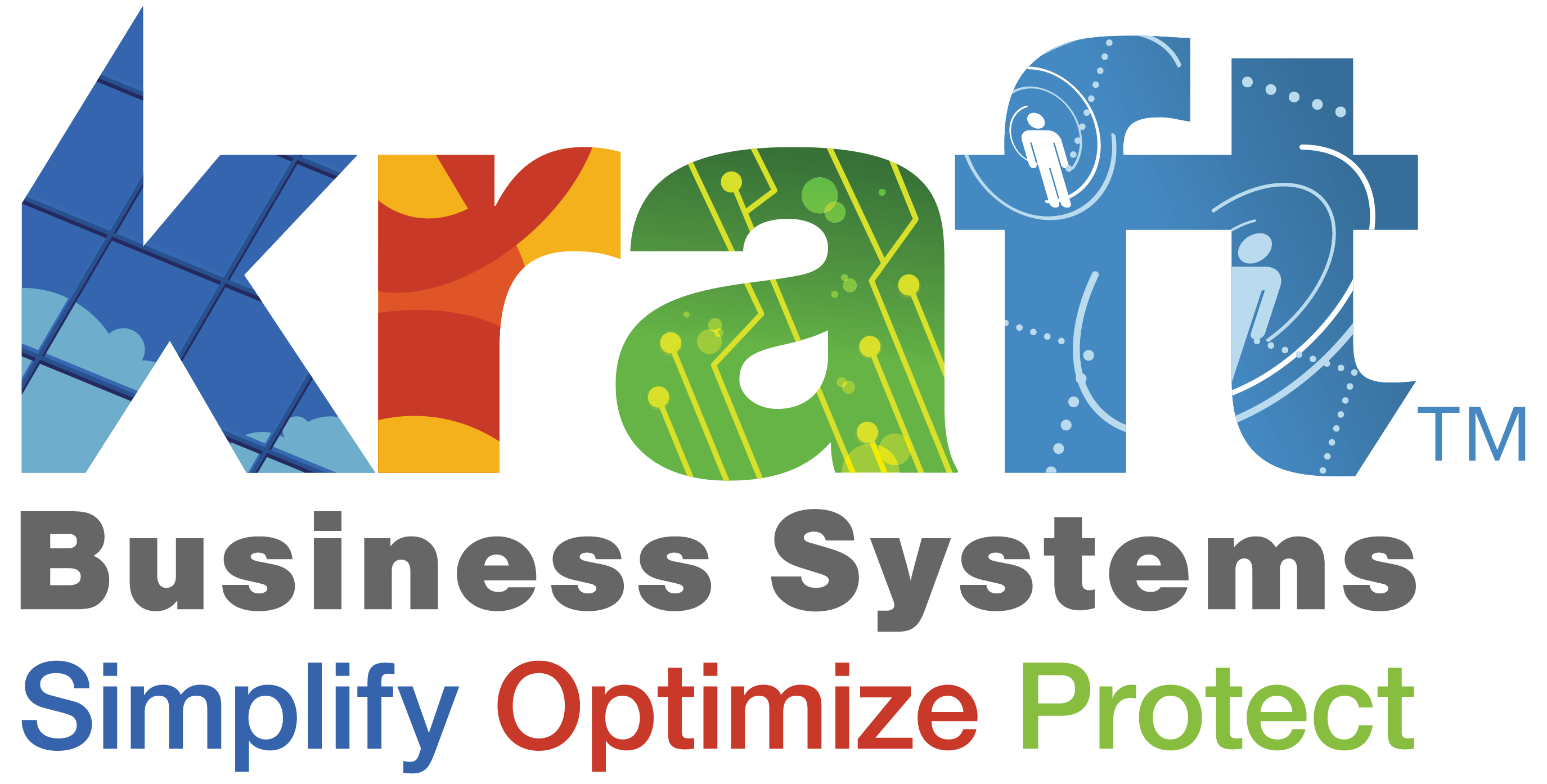Information compliance refers to the practices and processes organizations use to ensure they meet all legal, regulatory, and internal requirements for handling data and information. It’s a critical business function that protects sensitive data while maintaining legal and regulatory obligations.
“Compliance is now about so much more: culture, ethics, advice – modern compliance really is at the heart of the business.” – International Compliance Association
What is information compliance?
- Definition: The process of meeting all legal, regulatory, and organizational standards for data handling, security, and privacy
- Purpose: To protect data, prevent breaches, avoid penalties, and build stakeholder trust
- Scope: Covers all types of data including personal information, health records, financial data, and intellectual property
Why it matters:
- Legal Protection: Avoids hefty fines (GDPR penalties can reach €20 million or 4% of global annual revenue)
- Trust Building: 87% of consumers won’t do business with companies they doubt have good security practices
- Risk Reduction: Prevents data breaches, service disruptions, and reputation damage
- Efficiency: Organizations using compliance automation can reduce costs by up to 60%
For businesses of all sizes, understanding and implementing information compliance isn’t just about avoiding trouble—it’s about building a foundation of trust and operational excellence.
Think of information compliance as your business’s immune system. When it works well, you hardly notice it. When it fails, the consequences can be devastating.
Every day, your business handles emails, customer transactions, performance reports, and other information that requires proper security and handling. Without proper compliance measures, this data remains vulnerable.

Information compliance terms explained:
Information Compliance Explained: Definition and Core Principles
What is Information Compliance?
Information compliance is more than a checklist of rules to follow—it’s the complete set of activities, policies, and procedures your organization puts in place to protect data while meeting legal requirements. Think of it as the guardrails that keep your business data safe while allowing you to operate efficiently.
Here at Kraft Business Systems, we’ve found that effective information compliance rests on three key pillars:
- Governance: Clear roles and decision-making processes that everyone understands
- Risk Management: Proactively identifying and addressing potential threats to your information
- Culture: Creating an environment where everyone takes responsibility for proper data handling
As IBM Think puts it: “Data compliance is the act of handling and managing personal and sensitive data in a way that adheres to regulatory requirements, industry standards and internal policies involving data security and privacy.”
When we work with Michigan businesses, we help them understand that information compliance goes beyond just technical safeguards. It includes practical elements like how you classify data, manage records, track consent, respond to access requests, handle breaches, and even manage third-party risks.
| Information Compliance | Information Security |
|---|---|
| Focuses on meeting legal, regulatory, and internal requirements | Focuses on protecting information from unauthorized access |
| Driven by external regulations and standards | Driven by threats and vulnerabilities |
| Measured by audits and assessments | Measured by incident metrics and technical tests |
| Involves legal, HR, operations, and IT | Primarily an IT and security function |
| Emphasizes documentation and evidence | Emphasizes controls and technologies |
Information Compliance vs Information Security Compliance
Many of our clients in Grand Rapids and across Michigan initially confuse these two related but distinct concepts.
Information compliance covers the entire spectrum of data handling requirements, while information security compliance specifically zeroes in on the security aspects. As OneTrust explains: “Information security compliance refers to the process of meeting third-party standards that secure the confidentiality, integrity, and availability of information through recommended controls and procedures.”
The key differences we help our clients understand include:
Scope: Information security compliance focuses specifically on security controls and measures, while general information compliance encompasses all aspects of data handling including privacy, retention, and ethical use.
Controls: Security compliance emphasizes technical safeguards like encryption and access management, while broader compliance includes organizational procedures and policies.
Audits: Security compliance often requires specialized security certifications (like SOC 2 or ISO 27001), while general compliance may involve broader regulatory reviews.
Data Compliance vs Data Security Compliance
Similarly, there’s an important distinction between data compliance and data security compliance:
“Data security compliance is a set of standards and laws focused on protecting data from breaches, theft, or loss through encryption, access controls, backups, and ongoing audits,” notes Kiteworks.
Data compliance, on the other hand, covers broader obligations like privacy rights, consent management, data minimization, cross-border transfers, retention policies, and transparency requirements.
Let’s make this concrete: A healthcare provider in Detroit might implement strong encryption and access controls to meet HIPAA security requirements (data security compliance), while also establishing clear patient consent processes and retention schedules (broader data compliance).
For businesses across Michigan—from manufacturing firms in Flint to tech startups in Ann Arbor—understanding these distinctions helps create comprehensive protection that addresses both technical security and broader regulatory requirements.
Information Compliance Explained: Definition and Core Principles
Major Regulations & Standards You Need to Know

Navigating information compliance can feel like trying to read a map written in multiple languages at once. For Michigan businesses, understanding which rules apply to you doesn’t have to be overwhelming. Let’s break down the regulations that might affect your business, no matter your size or industry.
General Data Protection Regulation (GDPR)
You might think, “We’re in Michigan, why worry about European laws?” Well, if your Grand Rapids business sells products online to someone in Paris, GDPR suddenly matters. This regulation applies if you offer goods to EU residents, monitor their behavior, or process their data.
GDPR sets high standards for data handling, with serious consequences for non-compliance. Those 72-hour breach notification requirements and potential fines of €20 million or 4% of global revenue certainly get everyone’s attention!
Health Insurance Portability and Accountability Act (HIPAA)
For our healthcare clients across Michigan, HIPAA is practically a household name. This regulation creates a framework for protecting patient information through its Privacy Rule, Security Rule, and Breach Notification Rule.
The penalties can reach $1.5 million per violation category annually, making HIPAA compliance non-negotiable for medical practices, insurers, and their business partners.
Payment Card Industry Data Security Standard (PCI DSS)
Does your business accept credit cards? Then PCI DSS applies to you. Whether you’re a small bakery in Traverse City or a large retailer in Detroit, you need to protect cardholder data, maintain secure networks, and regularly test your systems.
Think of PCI DSS as the rulebook that helps you keep customer payment information safe while avoiding costly fines and reputation damage.
Sarbanes-Oxley Act (SOX)
For public companies and their subsidiaries, SOX requirements include rigorous financial reporting controls. Born from major corporate accounting scandals, SOX demands management assessment of internal controls, external auditor verification, and proper records retention.
California Consumer Privacy Act (CCPA) and State Laws
Michigan businesses aren’t immune to other states’ laws. If you have California customers, CCPA might apply if you have annual revenue over $25 million, handle data from 50,000+ California consumers, or derive half your revenue from selling their information.
With Virginia, Colorado, Utah and other states creating their own privacy laws, the patchwork of requirements grows more complex each year.
Federal Risk and Authorization Management Program (FedRAMP)
For those Michigan businesses working with federal agencies, FedRAMP compliance provides standardized security protocols for cloud services. This framework helps ensure your government partnerships remain secure and compliant.
ISO 27001
This international standard offers a systematic approach to managing sensitive information. ISO 27001 helps organizations identify security risks, implement appropriate controls, and continuously improve their security posture. Think of it as a globally recognized seal of approval for your information security practices.
NIST Cybersecurity Framework (NIST CSF)
Though voluntary, the NIST framework has become the gold standard for managing cybersecurity risk. Its five core functions—identify, protect, detect, respond, and recover—provide a comprehensive approach to security that many Michigan businesses find invaluable.
Data Sovereignty Considerations
Data sovereignty might sound like a political concept, but it’s actually quite practical. It simply means your data is subject to the laws of the country where it’s stored. If your business stores customer information in data centers across different states or countries, you’ll need to comply with each location’s regulations.
For a deeper dive into these governance frameworks, explore our More info about Governance, Risk, and Compliance Framework.
Determining Which Rules Apply to You
With this regulatory alphabet soup, how do you figure out which rules actually matter for your Michigan business? Let’s simplify the process.
Industry-Specific Considerations
Your industry often determines your baseline requirements. Healthcare organizations need to worry about HIPAA, financial services companies must address GLBA and SOX, and educational institutions need to comply with FERPA. Your industry essentially provides the first filter for which regulations apply.
Geographic Scope
Where your customers live matters enormously. A small business in Holland, Michigan might suddenly need to comply with GDPR if they start shipping products to Germany. Similarly, having California customers might trigger CCPA obligations, even if you’ve never set foot in the Golden State.
Data Types
The kind of information you handle significantly impacts your compliance requirements. Personal Identifiable Information (PII) like names and Social Security numbers, Protected Health Information (PHI) such as medical records, payment card data, and government-related Controlled Unclassified Information (CUI) all come with their own regulatory demands.
Risk Assessment
A thoughtful risk assessment helps identify which regulations apply and prioritize your compliance efforts. By documenting data flows, identifying regulatory triggers, and assessing the impacts of non-compliance, you can make informed decisions about where to focus your resources.
Compliance Thresholds
Many regulations only kick in once you cross certain thresholds. These might relate to your revenue, the volume of data you process, or your business relationships. Understanding these thresholds helps prevent unnecessary compliance work while ensuring you meet obligations when they do apply.
At Kraft Business Systems, we help Michigan businesses steer these complexities through our IT Compliance Risk Assessment services. We provide clarity on which regulations apply to your specific situation and develop practical approaches to address them without breaking the bank.
Information Compliance Explained: Definition and Core Principles
7-Step Roadmap & Automation Toolkit for Achieving Information Compliance

Turning information compliance from an overwhelming challenge into a manageable process is something we’ve helped countless Michigan businesses achieve. Let’s walk through our proven 7-step roadmap that breaks this complex journey into bite-sized pieces you can actually accomplish.
Step 1: Scope Your Program and Assess Risk
Think of this step as drawing the boundaries on your compliance map. Before you can begin the journey, you need to know where you’re going.
First, identify which regulations actually apply to your business—no sense spending time on rules that don’t affect you. Then document what types of data flow through your organization. Is it customer information? Healthcare records? Payment details?
Next, determine which parts of your business fall within these boundaries. Is it just your IT department, or does your sales team handle sensitive data too?
Finally, conduct a risk assessment to focus your efforts where they matter most. As one compliance expert puts it, “Every strong compliance program starts with understanding risk and prioritizing based on potential financial loss or reputational harm.”
Step 2: Data Classification and Inventory
You can’t protect what you don’t know you have. This step is like taking inventory of your digital assets.
Start by classifying your data based on sensitivity. Some information might be public knowledge, while other data needs strict protection. Document how information flows between your systems and any third parties. Who owns each type of data? How long should you keep it?
This inventory becomes your foundation for all future compliance work—think of it as your compliance treasure map.
Step 3-4: Close Gaps & Document Evidence
Now that you know what needs protection, it’s time to strengthen your defenses.
Controls Mapping helps you connect your existing safeguards to specific regulations. This reveals where you’re covered and where you need additional protection. Many controls can satisfy multiple regulations simultaneously—a real time-saver when done right.
Policy Updates might not be exciting, but they’re essential. Review your information security policies, privacy statements, acceptable use guidelines, and incident response procedures to ensure they align with compliance requirements.
Training and Awareness transforms your team from a potential vulnerability into your strongest asset. Develop training that speaks to different roles within your organization. Your IT staff needs technical details, while your executives need the big-picture view.
As compliance expert Dorian C. reminds us, “Compliance is following rules set by people other than ourselves.” Without proper training, your team won’t understand what’s expected of them.
For deeper implementation guidance, our Information Security Compliance Tools resource offers practical advice custom to Michigan businesses.
Step 5: Manage and Monitor Your Program
Compliance isn’t a one-and-done achievement—it’s an ongoing process that requires vigilance.
Establish key performance indicators to measure your compliance health. Regularly test your controls to ensure they’re working as intended. Stay alert for regulatory changes that might affect your business. And when compliance incidents occur (they will), track how you address them.
Think of this step as regular health check-ups for your compliance program.
Step 6: Perform Your Audit
Even the most diligent compliance programs need independent verification. Preparing for audits doesn’t have to be stressful if you’ve followed the previous steps.
Gather your evidence in an organized fashion. Conduct pre-audit assessments to catch issues before the auditors do. Address findings promptly and document your remediation actions.
With good preparation, audits become validation of your hard work rather than something to fear.
Step 7: Continuous Improvement
The compliance landscape never stands still, and neither should your program.
Incorporate lessons from each audit cycle. Adapt to changes in your business operations. Implement new technologies and best practices as they emerge. Regularly review and refresh your compliance approach.
This ongoing refinement keeps your program effective and efficient as regulations and threats evolve.
Automating Information Compliance for 60% Cost Savings
Here’s where things get exciting. Manual compliance processes drain resources and leave room for human error. Automation changes that equation dramatically.
Industry research confirms that “Businesses using Compliance Automation can reduce their cost of compliance up to 60% with efficiencies gained.” That’s a game-changer for Michigan businesses watching their bottom line.
Compliance Dashboards give you real-time visibility into your compliance status. Imagine having a compliance scorecard that shows at a glance where you stand, with risk indicators highlighting potential issues before they become problems.
Automated Alerts notify you when something needs attention—policy violations, control failures, upcoming deadlines, or regulatory changes. No more compliance surprises.
API Integrations connect your compliance tools with other business systems, creating a seamless flow of information between your identity management, security monitoring, cloud services, and vendor management platforms.
At Kraft Business Systems, we’ve helped organizations throughout Michigan implement these automation tools through our Cybersecurity Compliance solutions. We leverage our expertise in Governance, Risk, and Compliance Platforms to make compliance more manageable and less costly for businesses of all sizes.
The goal isn’t just checking boxes—it’s building a compliance program that protects your business and your customers while supporting your growth. That’s the kind of practical, business-friendly approach to information compliance we deliver every day.
Information Compliance Explained: Definition and Core Principles
Frequently Asked Questions about Information Compliance
What data is covered by information compliance?
When our clients ask what falls under information compliance, we tell them it touches nearly every piece of data flowing through their business. Let’s break down the main categories:
Personally Identifiable Information (PII) includes all those details that can identify someone – names, addresses, phone numbers, Social Security numbers, and even email addresses. Even something as seemingly anonymous as an IP address can be considered PII in certain contexts.
Protected Health Information (PHI) goes beyond just medical records. It covers treatment information, payment details, insurance information, and really any health data that contains personal identifiers. For our healthcare clients in Michigan, this is particularly important under HIPAA regulations.
Cardholder Data doesn’t just mean credit card numbers. It includes the cardholder’s name, expiration dates, service codes, and those security codes on the back of cards (you know, the ones you scramble to find when shopping online).
Controlled Unclassified Information (CUI) might sound mysterious, but it’s simply information that requires protection but isn’t classified. This includes government contract details, tax information, export-controlled research, and critical infrastructure information.
Understanding exactly what data your Michigan business handles helps us create compliance programs that protect what matters most without creating unnecessary work.
What are the risks and penalties for non-compliance?
The stakes for neglecting information compliance are higher than ever, and we’ve seen the fallout with some clients who came to us after problems occurred.
The financial hit can be substantial. GDPR violations can cost up to €20 million or 4% of global annual revenue. HIPAA penalties reach up to $1.5 million per violation category annually. Even PCI DSS non-compliance can lead to monthly fines between $5,000 and $100,000. For our smaller Michigan clients, these numbers aren’t just statistics—they represent existential threats to their businesses.
Beyond the immediate financial penalties, the ripple effects can be devastating. Class action lawsuits, regulatory investigations, and for public companies, even shareholder lawsuits can follow a compliance failure. We’ve seen businesses forced to shut down systems during remediation, divert critical resources to address compliance issues, and lose valuable productivity during incident response.
Perhaps most damaging is the trust you lose. In our experience, rebuilding customer confidence after a compliance failure takes far more time and resources than implementing proper compliance measures from the start. A McKinsey survey found that 87% of consumers would simply walk away from companies they don’t trust with their data.
Whether you run a small business in Traverse City or manage a large enterprise in Detroit, these risks make a compelling case for prioritizing compliance.
How does information compliance build customer and stakeholder trust?
Information compliance isn’t just about avoiding problems—it’s about building something valuable: trust.
When your business demonstrates compliance with recognized standards, you’re sending a clear message about your commitment to protecting customer data. This isn’t just good ethics; it’s good business. Our clients who prominently display their compliance certifications often report that prospects mention it as a deciding factor in choosing their services.
Strong compliance practices give you a genuine competitive edge. We’ve helped clients highlight their privacy and security practices in proposals and watched as they sailed through vendor assessments that left their competitors struggling. As one of our Grand Rapids clients put it, “Our compliance program has become one of our best sales tools.”

The numbers back this up. PwC research shows that 85% of customers would refuse to do business with a company if they were concerned about its data practices. Companies with strong privacy programs report 40% lower breach costs. And we’ve consistently seen that organizations demonstrating compliance enjoy shorter sales cycles with security-conscious customers.
From Flint to Grand Rapids, our Michigan clients have finded that robust compliance isn’t just about checking boxes—it’s about building a foundation of trust that supports everything else they do.
Information Compliance Explained: Definition and Core Principles
Conclusion
Information compliance isn’t just a box-checking exercise or legal hurdle—it’s a cornerstone of modern business success. Throughout this guide, we’ve explored how proper compliance protects your organization while building invaluable trust with customers and partners.
For Michigan businesses, from small shops in Holland to large enterprises in Detroit, compliance touches virtually every aspect of how you handle information. It might seem overwhelming at first, but breaking it down into manageable pieces makes it achievable for organizations of any size.
Remember these key points as you strengthen your compliance program:
Understand Your Obligations. Take time to identify which regulations apply to your specific situation. Your industry, location, and the types of data you handle all determine your compliance requirements. What works for a healthcare provider in Kalamazoo will differ from what’s needed by a retailer in Lansing.
Focus Where It Matters Most. Not all compliance risks are created equal. By taking a risk-based approach, you can direct your resources to the areas that pose the greatest threat to your business. This practical approach helps you make the most impact with limited resources.
Follow a Structured Path. Our 7-step roadmap provides a clear framework for building your compliance program methodically. This proven approach has helped countless Michigan businesses transform compliance from a daunting challenge into a manageable process.
Accept Technology. Automation isn’t just a nice-to-have—it’s essential for cost-effective compliance. The right tools can reduce your compliance costs by up to 60% while improving accuracy and consistency.
Make Compliance Part of Your Culture. When everyone from the receptionist to the CEO understands their role in maintaining compliance, it becomes woven into the fabric of how you do business. Training, clear policies, and consistent messaging help build this culture.
Never Stand Still. Compliance isn’t a destination—it’s a journey. Regulations evolve, your business changes, and new threats emerge. The most successful organizations continuously review and improve their compliance programs.
At Kraft Business Systems, we’ve helped businesses across Michigan steer the complex world of information compliance. Our team understands the unique challenges facing organizations in our state, from automotive suppliers in Detroit to furniture manufacturers in Grand Rapids.
We don’t just help you check boxes—we partner with you to build compliance programs that protect your business while supporting your growth objectives. Our practical, down-to-earth approach means you get solutions that work in the real world, not just in theory.
Strong information compliance isn’t just about avoiding problems—it’s about building a foundation of trust that supports everything else you do. When customers, partners, and employees know you take their data seriously, it opens doors to new opportunities.
Ready to strengthen your compliance program? Explore our IT solutions or reach out to our team to learn how we can help your Michigan business achieve and maintain compliance while keeping your focus where it belongs—on running your business.






